PowerShares Emerging Markets Sov Dbt ETF
Latest PowerShares Emerging Markets Sov Dbt ETF News and Updates
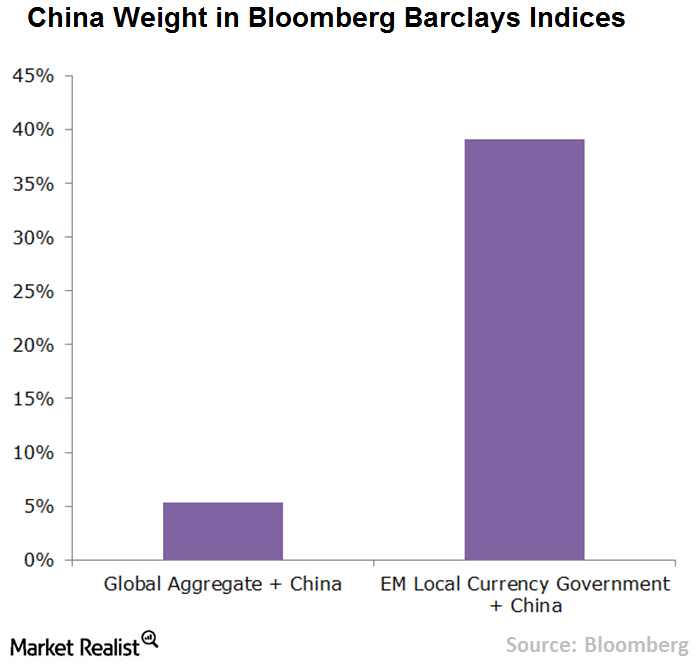
Inclusion of Chinese Onshore Bonds in Global Indexes
In March 2017, Citi’s fixed income indexes decided to include onshore Chinese bonds (EMB) (PCY) in its three government bond indexes.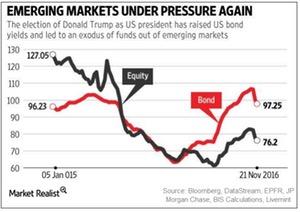
How Did Emerging Market Debt Perform in 2016?
In the emerging market bond space (PCY) (EMLC), high-yield bonds and local currency bonds outperformed hard currency sovereign bonds.Financials Risks you should know before investing in international bond funds
In this article, we’ll discuss some of the risks an investor must consider before investing in international bonds. Some of these risks are unique to this asset class.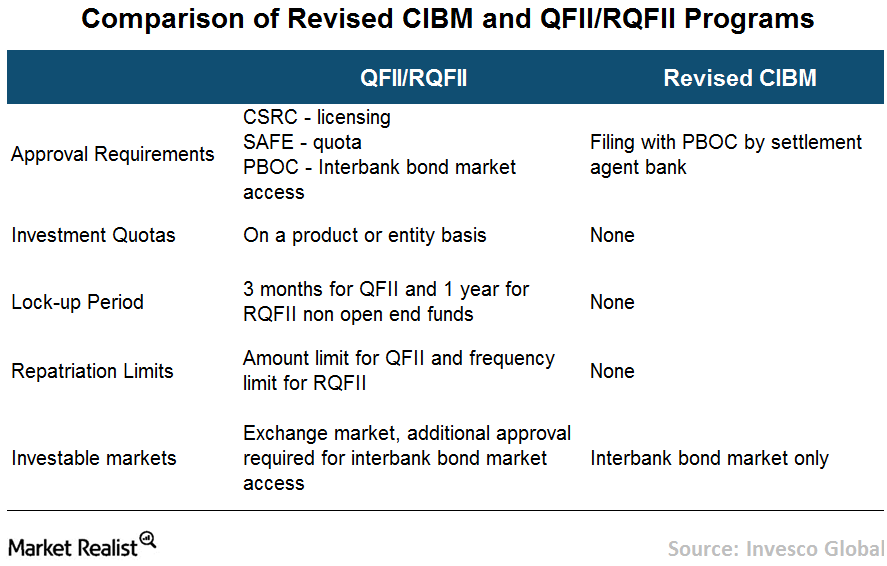
China’s Baby Steps to Open Its Onshore Bond Market
The opening of China’s onshore bond market (EMB) (PCY) was a gradual process that included a number of cautious measures.
Why Should Investors Focus on Real Yield in Emerging Markets?
Real yields in emerging markets (or EM) have remained at compelling levels over the past few years.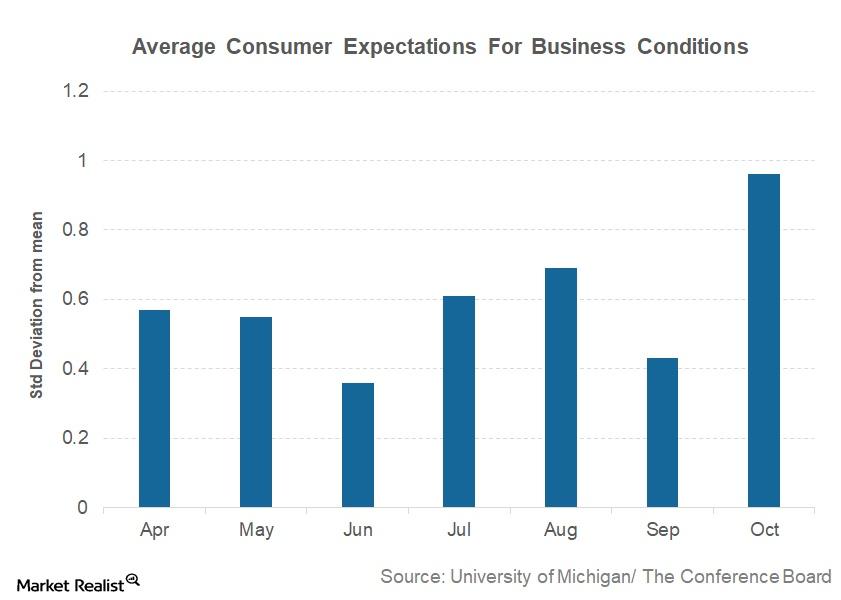
Understanding the Sharp Rise in Consumer Expectations in October
The November Conference Board LEI reported the average consumer expectations for business conditions for October at 0.96, a sharp increase from the September reading of 0.43.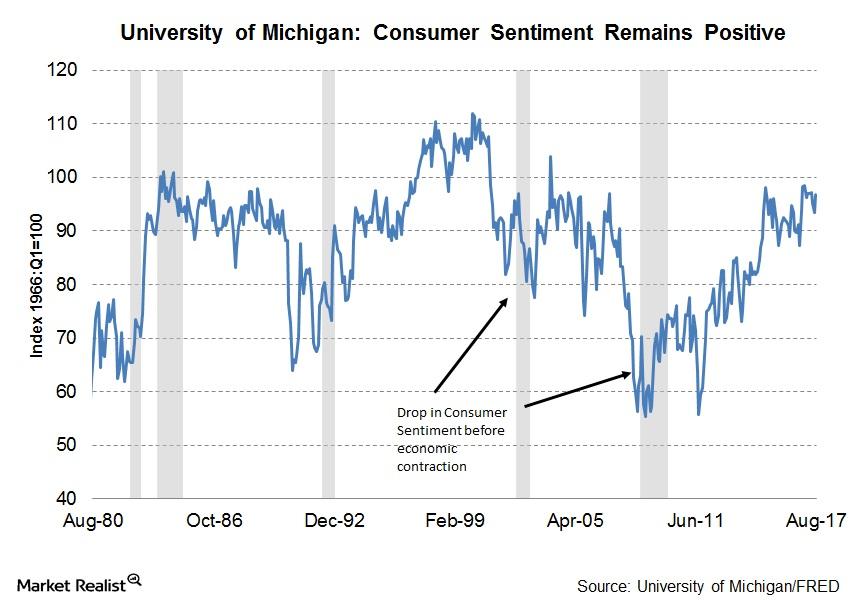
Consumers’ Business Condition Expectations Continue to Improve
Consumer expectations for business conditions Consumer expectations data, which forms the only non-leading component of the Conference Board Leading Economic Index (or LEI), is collected through two different surveys. One of these surveys is conducted by the University of Michigan and Reuters, where consumer expectations for economic conditions in the next 12 months are collected, […]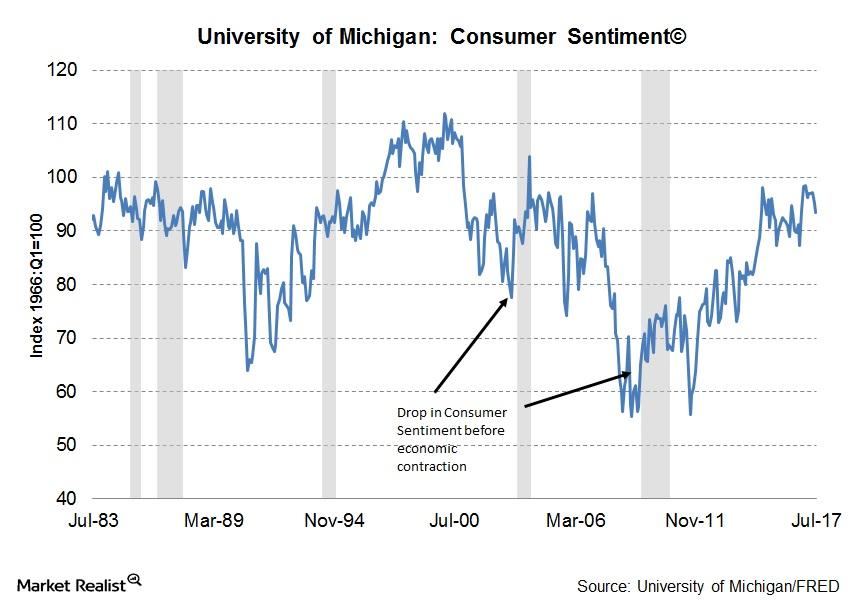
A Look at Consumer Expectations amid Risk Aversion
Consumer expectations for business conditions Consumer expectations form the only component of the Conference Board Leading Economic Index (or LEI) based on business expectations. Referring to consumer expectations regarding future economic conditions, their measurement is an average of two surveys. One survey, conducted by the Conference Board, records consumer expectations for business conditions six months […]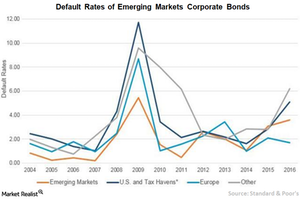
EM Corporates Offer Huge Opportunities and Better Profile
VanEck A Diverse and Growing Category The emerging markets high yield bond market has grown tremendously over the past 10 years, from $56 billion at the end of 2007 to $440 billion as of June 30, 2017.[2. Source: BofA Merrill Lynch.] In addition to growing in size, diversity within the category has also increased. Investors currently […]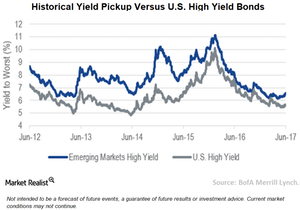
How to Benefit from Emerging Markets Corporate Debt
VanEck Higher Yield and Lower Duration Compared to U.S. high yield bonds, emerging markets high yield bonds offered a 90 bps yield pickup as of June 30, 2017.[1.U.S. high yield bonds and emerging markets high yield bonds are represented by BofA Merrill Lynch US High Yield Index and BofA Merrill Lynch Diversified HY US Emerging […]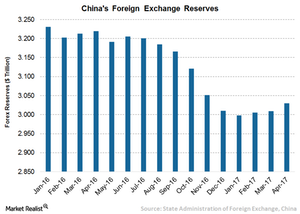
Could China Attract Higher Inflows after Bond Market Reforms?
The yuan remains a focus of attention of the international community and a key risk for China’s macroeconomic stability in recent years.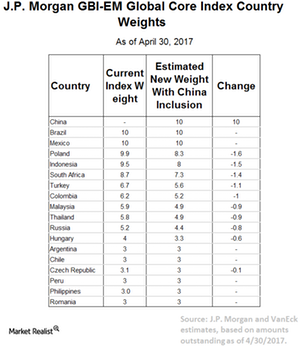
What Difference Does Index Inclusion Make?
Government bond yields in China are higher than its Asian counterparts such as South Korea and Singapore and much higher than major developed markets.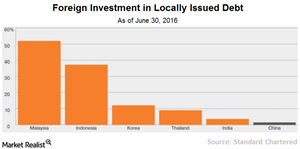
How Higher Inflows to China Could Impact Other Emerging Markets
With the onset of reforms, foreign holdings in China’s onshore bond (EMB) (PCY) market is gradually increasing.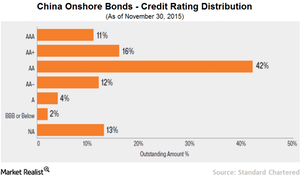
What’s Holding Back Foreign Investors from China?
Many leading bond index providers are still not including China’s onshore bonds in their benchmark indexes due to various regulatory and operational concerns.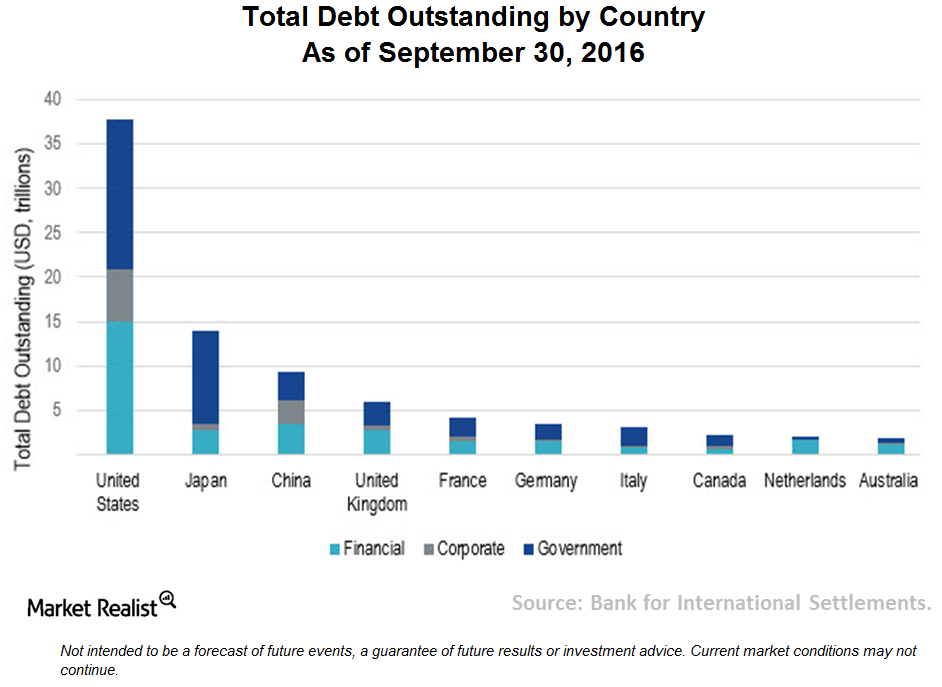
China’s Onshore Bond Market Reforms
China’s onshore bond market (EMB), consisting of locally denominated and issued bonds, is larger than the offshore bond market.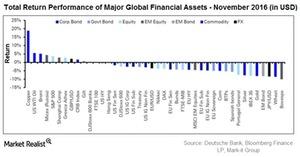
Why Was November Important for Global Financial Markets?
Trump’s unexpected presidential victory caused short-term uncertainty about markets and policies. His win reinforced a reflationary theme in global markets.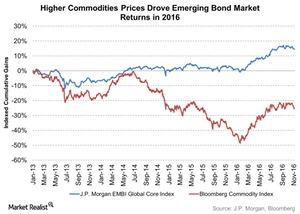
Are Yield Opportunities Flourishing in Emerging Market Bonds?
Emerging market (or EM) bonds (PCY) offer diversified exposure with higher yields compared to their developed market equivalents (IHY).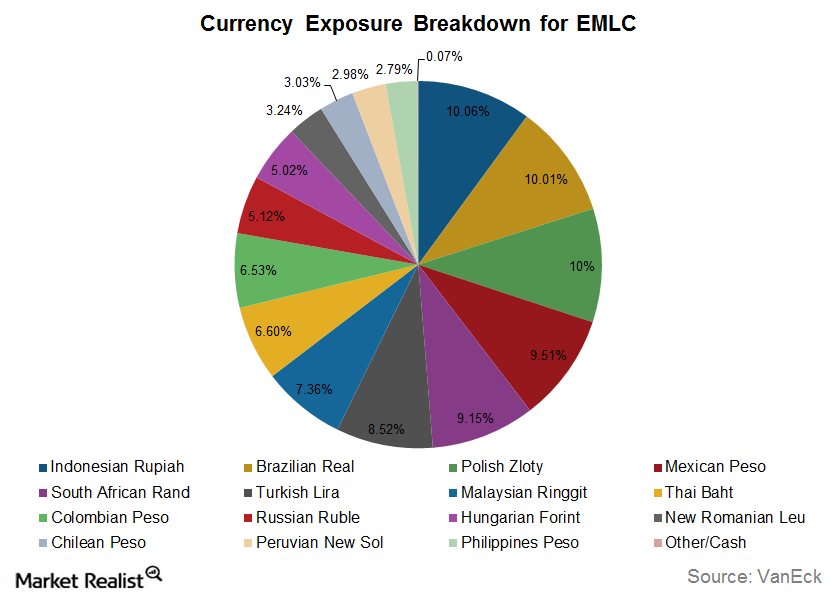
Looking to Local-Currency Emerging Market Bonds for Opportunities
In today’s context, emerging market bonds (IGEM) look like good opportunities for investors.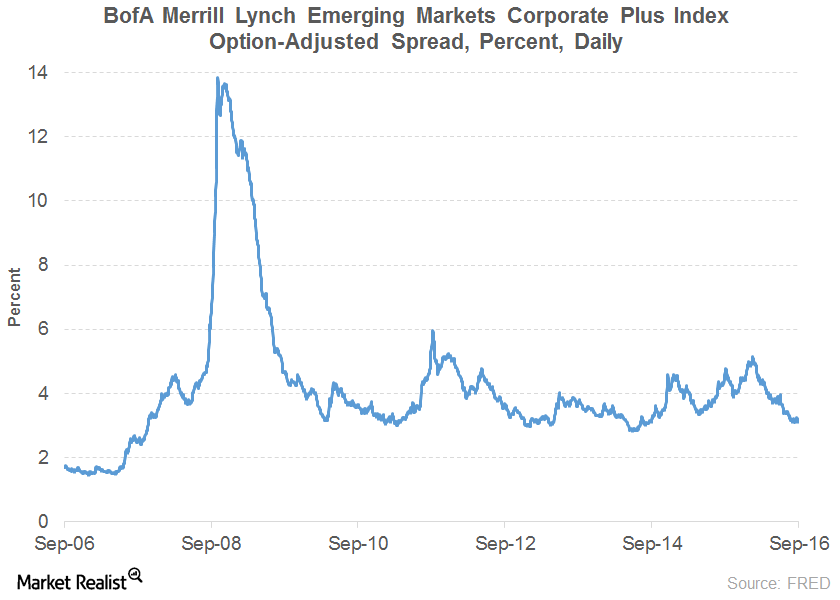
The Rally in Emerging Market Debt
Emerging markets’ nonfinancial corporate debt breached the $26 trillion mark in the first half of 2016.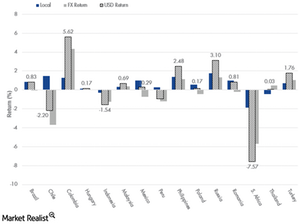
Is Emerging Market Debt Immune to Rate Hikes?
The Federal Reserve kept its key interest rate unchanged in its policy meeting this week while signaling a possible rate hike in December.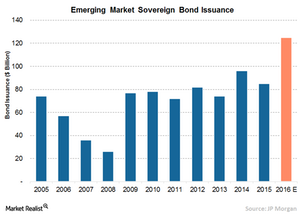
Emerging Market Debt Outperforms Other Risk Assets
While around 30% of developed market bonds (IHY) are trading at negative yields, emerging market debts (HYEM) are offering attractive returns.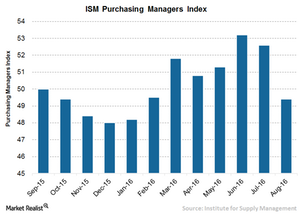
Fed’s Rate Hike Decision to Drive the Markets
In the wake of disappointing economic indicators over the past month, the Federal Reserve kept the interest rate unchanged in its policy meeting this week.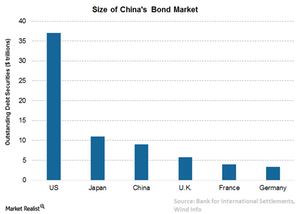
Regulatory Hurdles Affecting Chinese and Indian Bond Markets
As the intensifying search for yield goes international, Matt examines and shares his thoughts on the different Asian bond markets.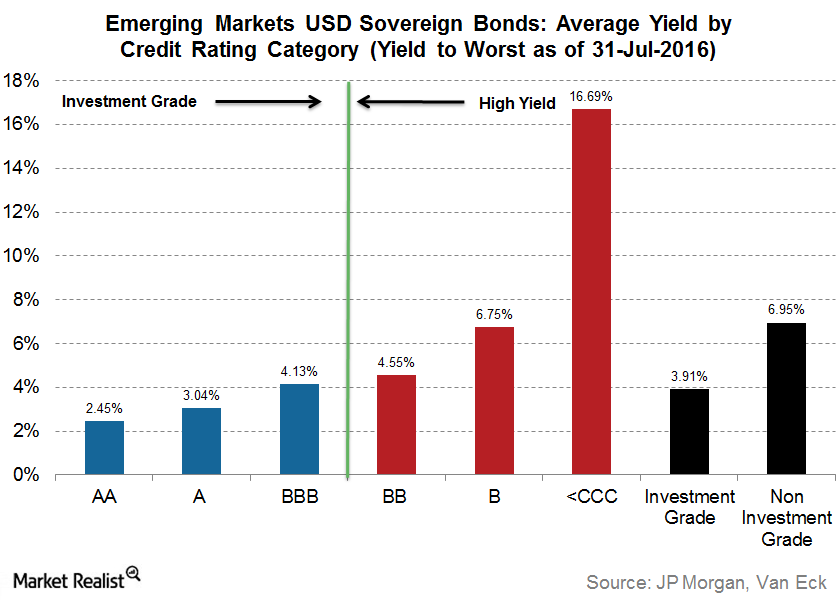
Emerging Market Bonds: Higher Yields Could Reflect Higher Risks
Emerging market bonds have been doing extremely well over the past couple of months. EM debt funds have been in the green for seven consecutive weeks.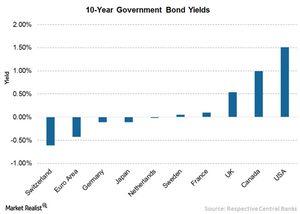
Why Does Emerging Market Debt Still Look Attractive?
Emerging market debt (EMB) offers plenty of opportunities to investors. Markets are expected to continue their outperformance for the next few quarters.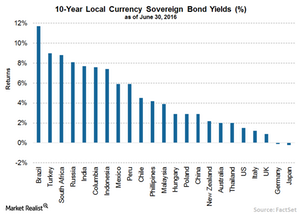
Central and Eastern Europe Have the Brexit Blues
In the long term, Eastern Europe is largely affected by the United Kingdom’s exit from the European Union because of its strong trade links.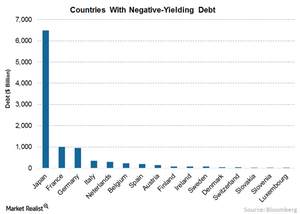
How Negative Rates Intensify the Hunt for Yield
By early July, some $11.5 trillion in bonds were trading at negative rates, with 58% of the Barclays US Aggregate Bond Index1 trading below 1%.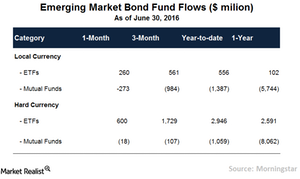
Time to Look at Emerging Market Debt
Global emerging markets (“EM”) debt, both hard and local currency, rebounded strongly in June after a significant retracement in May.
